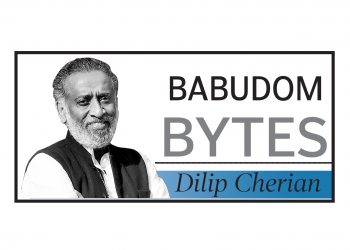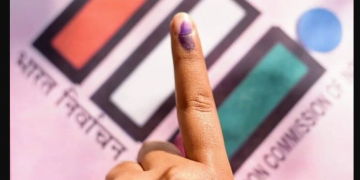India’s espionage architecture is quietly shifting. The appointment of Parag Jain as the new chief of RAW comes at a particularly volatile moment globally. Iran has just executed alleged Mossad assets and detained hundreds, reportedly triggering emergency backchannel coordination by several countries, including India. A few Indian students caught in the crossfire in Mashhad were hastily repatriated. It was a sharp reminder that secret wars don’t stay in the shadows for long.
Jain’s arrival at the top of RAW isn’t just a routine succession. He represents a deeper recalibration. Known for his pivotal role in Operation Sindoor, Jain brings a rare blend of human intelligence and intelligence fluency, said to have enabled India’s pinpoint strikes on terror hubs across the border.
That kind of quiet effectiveness is what India’s intelligence community desperately needs. Someone not just to pre-empt threats but to lead with precision in an era where drones, data leaks, and digital fingerprints define geopolitical risk.
All of this is unfolding as National Security Adviser Ajit Doval, the original architect of India’s modern covert capability, approaches the twilight of his tenure. While no names are confirmed yet, the jockeying for the NSA chair has quietly begun. The next NSA will walk into a role vastly different from what it was five years ago. Today’s challenges involve coordinating across increasingly blurred military-intelligence-tech boundaries, managing international optics, and navigating the messy moral fog of espionage in democracies.
In a world where spy wars now play out on digital platforms and battlefield servers, India’s strategic core is in the middle of a transition. The question is no longer whether our spies are up to the job but whether our leadership and its succession planning are.
Can an ex-babu fix Air India’s woes?
Air India has been in the news, and not for reasons one would want to be. A crash, a cascade of cancellations, tech meltdowns mid-air, and enough passenger horror stories to fill a miniseries. Into this mess may walk a retired senior babu, freshly out of the system and reportedly en route to a cushy corner office at the airline.
Now, babus are known for many things, whether they are steering policy, managing crises, or surviving turf wars. Running an airline in full-blown turbulence is a different kind of emergency drill.
But sources have informed DKB that this particular officer has a reputation for getting things done. And with Air India’s toilets taped shut with napkins and ministers sinking into their seats (literally), something clearly needs doing. The airline is crying out for accountability, training, and maintenance. Above all, it needs leadership that knows how to stay ahead of bad headlines.
Still, a single appointment won’t cut it if the deeper rot isn’t addressed. The airline is now known for overworked staff, overpromised routes and underdelivered service. These problems cannot be fixed by PowerPoint strategy alone.
If this ex-babu brings vision and backbone (and isn’t just window-dressing), maybe there’s hope for a turnaround. Otherwise, it’ll be just another chapter in the long saga of Air India’s flight plan gone wrong. Watch this airspace. And buckle up — it might still be a bumpy ride.
All announcement, no arrival
For those who remember, the Goods and Services Tax Appellate Tribunal (GSTAT) was supposed to be up and running by December 2024. Well, it’s now mid-2025, and all we have is the ghost of a tribunal. It’s been all promise, no presence.
To be fair, it did start with a bang. Flashy promos, a buzzing selection committee, and over a hundred eager candidates interviewed during the summer of 2024. For a brief moment, it felt like we might finally get that missing puzzle piece in the GST dispute resolution chain. But just as the engine began to hum, our fabled babudom pulled the handbrake.
Apparently, the committee didn’t even get around to signing the minutes of its own meetings. And then, in a classic Delhi plot twist, the key driver of the process, Revenue Secretary Sanjay Malhotra, exited stage left to take up residence in Mint Street as RBI Governor. The process flatlined.
Cut to May 2025. Another selection round was attempted, but then a judicial aspirant moved the Orissa High Court, effectively putting the brakes on the entire thing again. That’s two rounds down, zero appointments made. The tribunal needs 72 members, and right now it has none. And let’s not even talk about the states. Most haven’t nominated their members or even found the poor tribunal a roof.
So nearly eight years since GST was launched, we are still waiting for the tribunal that could ease the load on overburdened courts. The disputes keep mounting, but GSTAT? It’s still stuck in a Kafkaesque limbo. A classic Indian institution-in-the-making: all announcement, no arrival.
By Dilip Cherian






































